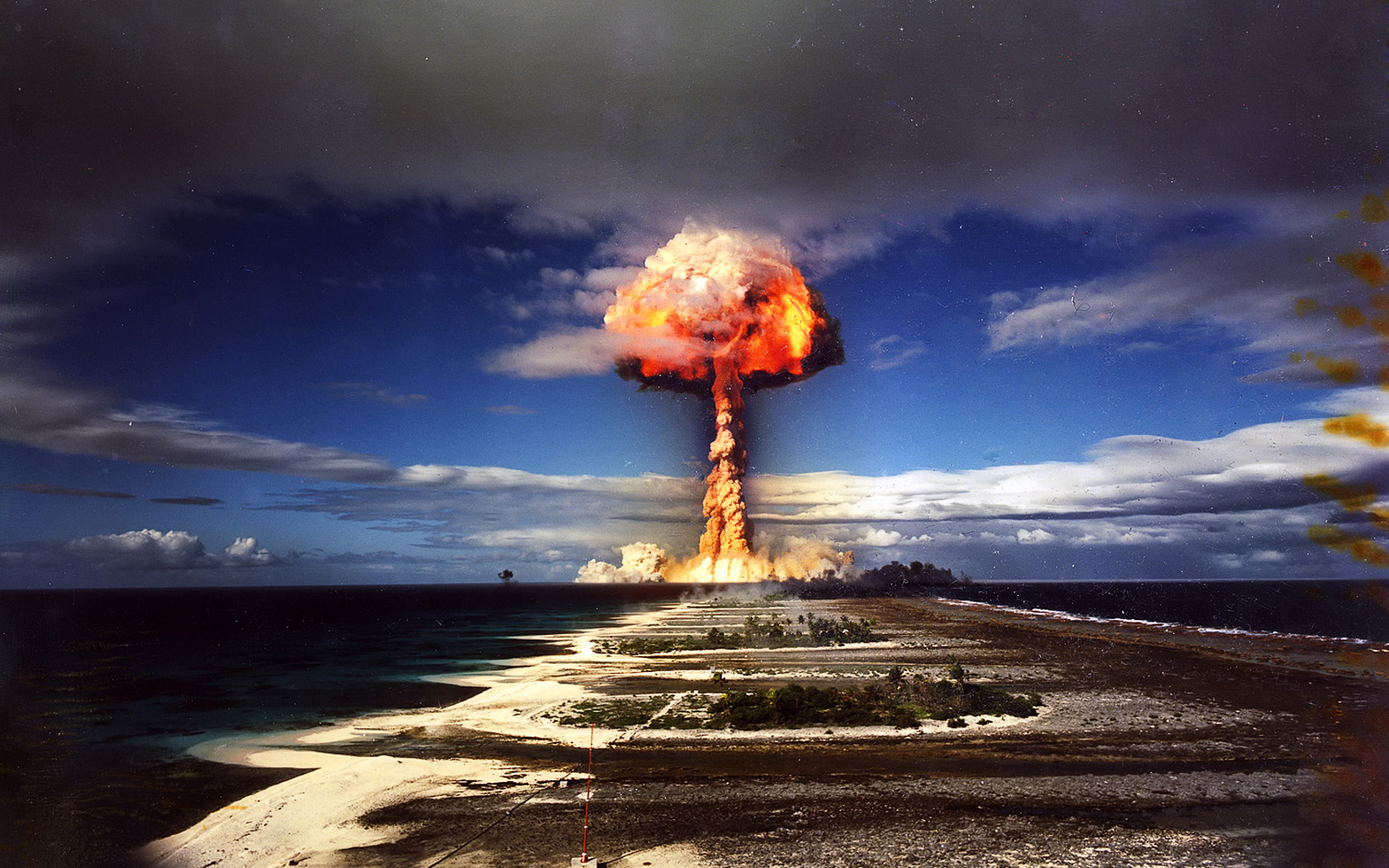
Army Air Force serviceman on the mission to document the nuclear device. It is assumed that this photo was made by a U.S. It is not known exactly who made this photograph of the mushroom cloud over Nagasaki. It is estimated that another 30,000 died due to the effects of radiation in the aftermath of the explosion, with some deaths occuring many years later. While estimates on the death toll differ, around 40,000 were killed by the initial blast. At 11:02 a.m., the B-29 Superfortress, nicknamed Bockscar, dropped a plutonium bomb code-named "Fat Man." When the bomb exploded some 1,500 feet over Nagasaki, it did so with a force equal to roughly 20,000 tons of dynamite. At the time, Nagasaki was a major port city and naval shipyard. The mission was sent to destroy the arsenal at Kokura, Japan, but due to heavy cloud cover it moved to the secondary target of Nagasaki. On August 9, 1945, the United States detonated an atomic bomb on the Japanese port of Nagasaki. What do you think the reporter meant when he described the bomb as "a living thing, a new species of being, born right before our incredulous eyes"? It was a living thing, a new species of being, born right before our incredulous eyes." It was no longer smoke, or dust, or even a cloud of fire. A reporter for the New York Times who accompanied the mission wrote of the scene, "Awestruck, we watched it shoot upward like a meteor coming from the earth instead of from outer space, becoming ever more alive as it climbed skyward through the white clouds. Does this the image emphasize or de-emphasize the destructive power of the bomb? How? Where was the photographer located when he or she took this photograph? Why do you think the photographer took the image from this vantage point? (The image was taken from the air from one of the planes on the mission that delivered the bomb to Nagasaki.) From what point of view are we looking at the atomic bomb blast? It is in line with my paranoid nature that anything can happen to myself and my family. I was curious to know more about atomic bombs and why they form mushroom clouds. Where can you find proof of this by examining the condition of the photograph? (The lines that are drawn on it indicate how the picture would have been cropped for various printings.) An atomic bomb mushroom cloud is a mixture of water vapor, debris, and clouds of smoke moving through the air after an atomic bomb explosion. This image was used repeatedly by the New York Times from 1945 through the mid-1990s. that everyone knows is dangerous and expensive, and really wasteful. This was a press print. “Because right now, we're entering into an arms race 2.0. “What we're trying to do is engage the public and give them ways to act, see how they can get engaged, talk to their leaders and our leaders to try to change the direction that we're on,” Bronson said. In each city it heads to, local conversations and events will be programmed. It's a traveling exhibition before arriving in New York, it was in Mexico City in 2020. We need to rally around this cause.”įor Rachel Bronson, president and CEO of the Bulletin of the Atomic Scientists, the "Amnesia Atómica NYC" program is a chance to get critical conversations started in one of the busiest corners in the country. “That doesn’t happen anymore,” Alonzo said. The 1982 rally took place around the time the United Nations held their Second Special Session on Disarmament.īut that kind of attention, explained the project’s curator, Pedro Alonzo, waned in the years that followed. June will mark the 40th anniversary of the nuclear disarmament demonstration where as many as one million people gathered in Central Park. This isn’t the first time New York City has played host to an anti-nuclear protest. His oeuvre includes works that have incorporated destroyed weapons, most notably " Disarm," a project that featured weapons that were crushed and rendered useless - including revolvers and machine guns - transformed into musical instruments.

#Atomic bomb mushroom cloud full
“I think that the goal should be full universal disarmament, like, get all of them,” Reyes said. “I think that the goal should be full universal disarmament, like, get all of them,” said Reyes, whose oeuvre includes works that have incorporated destroyed weapons, most notably " Disarm" - a project in which revolvers and machine guns were crushed and rendered useless, then transformed into musical instruments. His sculpture’s stark black-and-white aesthetic leaves no doubt about his feelings regarding the over 12,000 nuclear warheads in the world today. “Or if you care about social justice, there will be no society left after nuclear war.” “If you care about the environment, there will be no environment to save if a nuclear weapon goes off,” Reyes told Gothamist on the day "Zero Nukes" was erected.

For Reyes, the answer is an unequivocal yes.


 0 kommentar(er)
0 kommentar(er)
